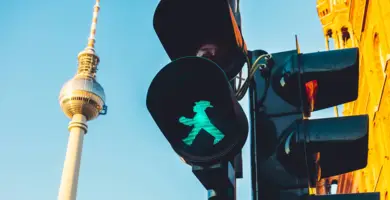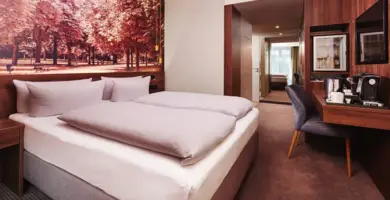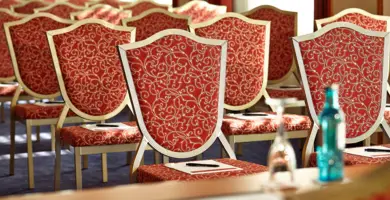Set off on a sightseeing tour from the hotel
Central location
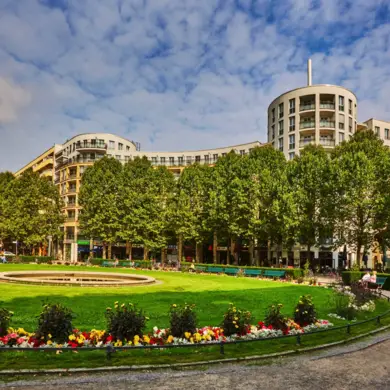
Ideal starting point
The HYPERION Hotel Berlin is within walking distance of the world-famous KaDeWe department store and the Kurfürstendamm boulevard. The central location in the Charlottenburg-Wilmersdorf district and the excellent transport links to the bus and subway make the hotel an ideal base for exploring the city. Thanks to the good transport connections, you can visit many of the most famous sights within a short drive. Visit the Brandenburg Gate, the government district at the Reichstag and the modern Potsdamer Platz.

on foot to KaDeWe
Few department stores are as well-known as the "Kaufhaus des Westens" in Berlin, affectionately known as KaDeWe. the department store was founded in 1907 in Tauentzienstraße, where it still attracts customers from all over the world with its wide range of goods of all kinds.
On the 60,000 square meters spread over eight floors, customers can find everything their hearts could desire - from the latest fashion and luxurious jewelry to the finest delicacies from all over the world. The gourmet floor offers the opportunity to try out exotic delicacies for yourself. Thanks to the central location of the HYPERION Hotel Berlin, you can reach the KaDeWe within 10 minutes.
At a glance
Places of interest in Berlin
Kurfürstendamm & Breitscheidplatz
Kurfürstendamm is one of the most important shopping streets in Berlin. This is particularly true of the section between the Memorial Church and the junction with Joachimsthaler Straße.
The rest of Kurfürstendamm, which Berliners and most visitors refer to as Ku'damm for short, is characterized by cafés, cinemas and theaters. The Kaiser Wilhelm Memorial Church on Breitscheidplatz consists of an ensemble of an old and a new church. The ruins of the old memorial church serve as a memorial against the war, while the congregation holds its services in the new church. The 20,000 stained glass windows, whose design makes the light in the interior appear blue, are striking.

The Reichstag as the seat of the Bundestag
Reichstag is the common abbreviation for the Reichstag building, in which the German Bundestag has met since 1994. It was built between 1884 and 1894. The dome, which is now one of Berlin's landmarks, was only erected during the reconstruction following German reunification.
For security reasons, visitors to the Reichstag building must book in advance. Registration is also required to climb the dome, but this can be done two hours before the desired viewing time if there are free places.

Berlin Wall Memorial
The central memorial site in the center of Berlin is a reminder of the once divided Germany. Along a 1,400 meter long section of the former Wall, exhibits and exhibitions give an impression of the years when the Wall was built, and the site of the memorial, Bernauer Strasse, played a particularly important role in the division of the city. The centerpiece of the site is the last remaining section of the Berlin Wall. The foundations of a former residential building, which formed the border until 1980, bring recent German history to life. Walk in the footsteps of the "Ossis" and "Wessis" starting from the HYPERION Hotel Berlin.

Olympic Stadium
The Olympic Stadium in the Olympiapark in Berlin looks back on a varied history. Built for the 1936 Olympic Games under the National Socialists, it has undergone extensive renovation in recent years.
74.the huge, covered stadium has room for 244 sports enthusiasts and culture fans to cheer on the players of Hertha BSC or experience famous artists live.
Visitors discover a mixture of architectural and German sporting history on a tour of the Olympic Stadium. An interesting eye-catcher is the blue tartan track, which was designed in the club colors of Hertha BSC.

German Museum of Technology
Even from a distance, the German Museum of Technology in Berlin is a spectacular sight: A "raisin bomber" seems to hover above the building and welcome visitors. On more than 25,000 square meters, over 100 collections on a wide variety of technical topics are presented.
The German Museum of Technology Berlin is the museum for explorers, technology enthusiasts and fans of rail and shipping. In addition to the permanent exhibitions on "Air and Space Travel", "Rail Transport", "Shipping" and "Production Technologies", the museum surprises visitors with changing events in which old and new technical achievements are presented. From the HYPERION Hotel Berlin you can reach the museum within 20 minutes by public transport.

Berlin Philharmonic Hall
Music and architecture go hand in hand in the Berlin Philharmonie. Not only do the world's most famous musicians come together here - the building's design is also a delight for fans of modern architecture. The building has been located in Berlin's Kulturforum since 1963.
The arrangement of the seats for the audience around a central podium is considered groundbreaking for modern concert hall construction. Outside of performances and rehearsals, visitors are taken on guided tours through the huge halls and the extensive collection of musical instruments.

Trip to Potsdam
Discover Potsdam on a day trip
From the Zoo station, you can reach the Brandenburg state capital of Potsdam within half an hour by S-Bahn line 7 or by regional train. As you leave the main station, your gaze falls on the newly built City Palace with the Fortuna Portal and the Nikolai Church.
Visit Sanssouci Park with its Chinese teahouse and botanical gardens. If the weather is fine, you can return to Berlin on a White Fleet excursion steamer.
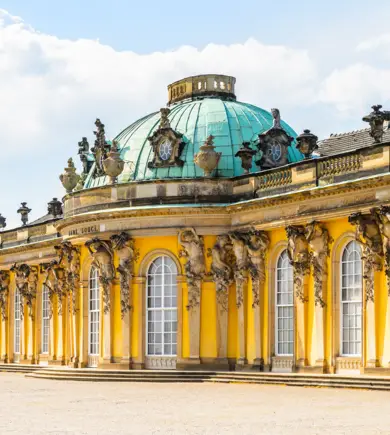
Opening hours
Berlin's sights | When is what open?
Discover Berlin
Other interesting topics
